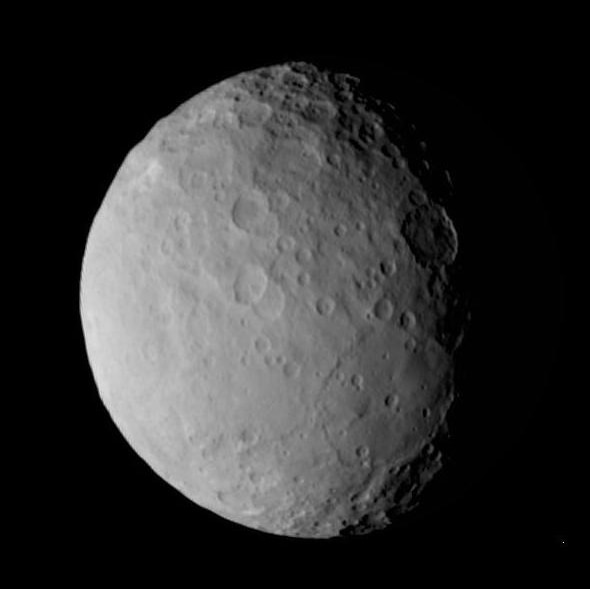Create a free profile to get unlimited access to exclusive videos, sweepstakes, and more!
The World, Ceres

On March 6, the Dawn spacecraft will ease into orbit around the largest asteroid in the main belt: Ceres.
As it approached Ceres on Feb. 19, Dawn took a series of images creating this amazing animation:
Although the resolution is still a bit low—this was taken from about 46,000 kilometers away, with a resolution of about 4 km/pixel—there are some interesting things you can see. For example, the mysterious pair of bright spots stays very bright even as they rotate into darkness, finally fading once the Sun fully sets for them.
That’s quite different behavior from another bright spot. Watch the animation: When the bright pair crosses over into darkness, turn your attention to the left side of Ceres. The next bright area comes into view after a moment, and as it rotates to the right, you can see it fade quite steadily, resolving into a crater with a bright but indistinct spot in it. For many features on airless worlds (and some with air, too) how bright a feature looks depends on the angle of sunlight hitting it. That bright region fades as it spins to the east and the Sun sets for it, but the very bright spots don’t.
That’s a clue about what they are. But we still don’t know! As Dawn gets closer, and the images get better, scientists will be paying attention to details like that so they can figure out just what they heck we’re seeing.
Another really interesting feature is an as-yet unnamed basin about 300 kilometers across (seen in the image above to the lower right); to give you a sense of scale, that basin would just fit in between Washington, D.C., and New York City. As I pointed out in an earlier post, it’s very flat given its width; I’d naively think it should be deeper. After the impact the floor may have filled in with water ice (Ceres has a lot of ice; it’s cold out there past Mars), or there may have been other forces at work. The edges of the crater don’t look round, either; it looks more like a rounded pentagon. That sometimes happens when a crater’s edge falls near cracks in the surface or the explosion shock wave hits material that’s a different strength. It could also simply be an illusion, caused by subsequent impacts marring the nice circular outline and fooling our eyes. Or it could be something else entirely; I’m guessing. Hopefully we’ll find out more in the coming months.
Excluding some fuzzy Hubble images, Ceres has been little more than a dot in our telescopes for centuries. Dawn hasn’t even gotten there yet and we’re already learning a huge amount about it … and getting even more questions. Of course, that’s why science is so much fun!
And a note: Some people call Ceres a dwarf planet, others a big asteroid. To be honest, I find that all a big distraction from the main point: Ceres is a world, a fantastic and fascinating place worthy of our attention and exploration. Dawn isn’t even really there yet and look what we’ve seen so far!


























